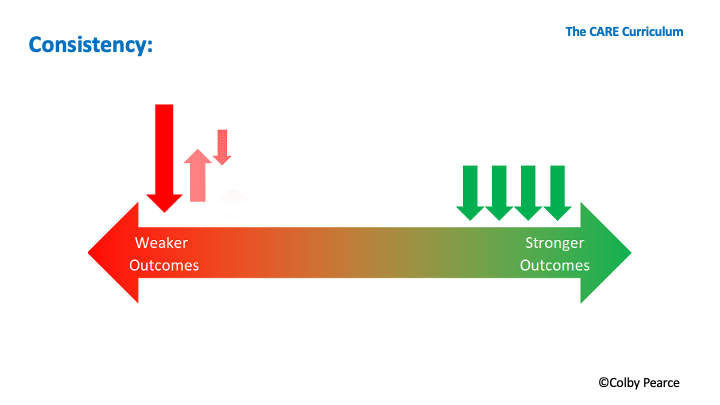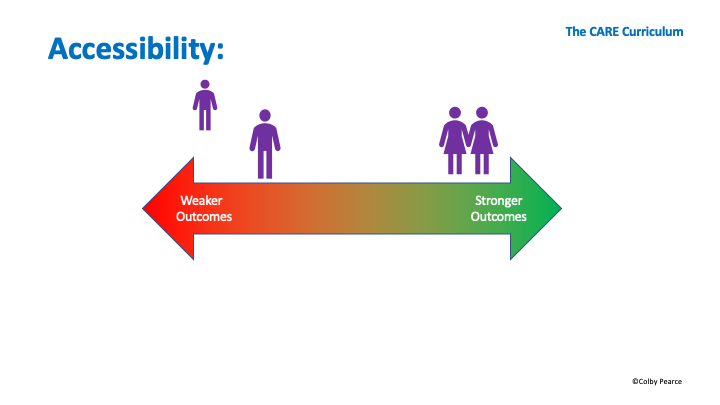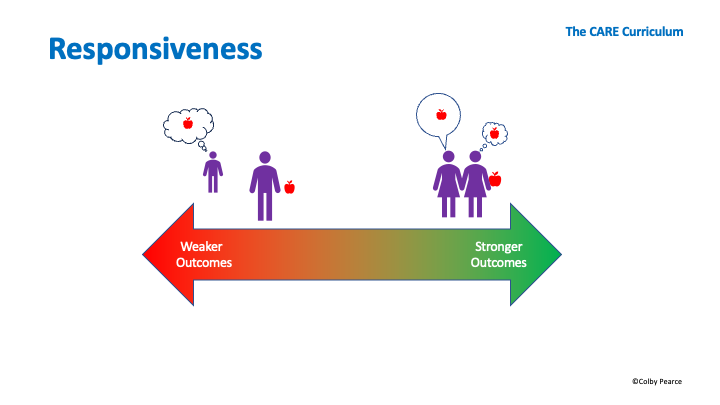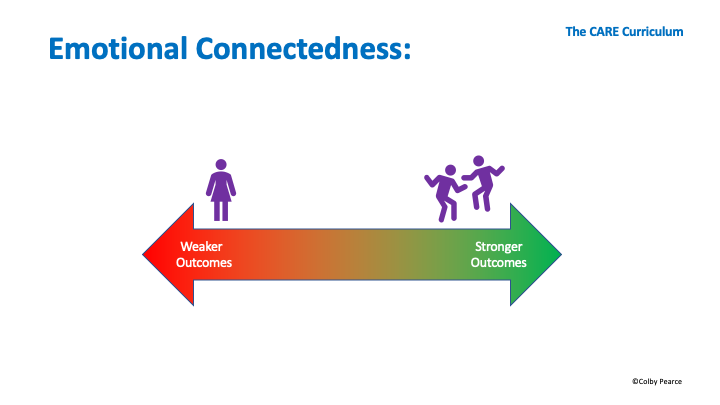People in Australia who have a diagnosed disability and have been accepted as a client of the National Disability Insurance Scheme (NDIS) have had access to additional supports intended to improve their quality of life and participation in activities that bring meaning and wellbeing. Many supports are delivered by professionals with tertiary (or other recognised) qualifications and training. In contrast, daily, personal supports are often delivered by support workers who may not hold a recognised qualification or have received comprehensive training in disability care. It is these service providers who are likely to find this page most beneficial, though other professionals might draw useful information and inspiration from it, including those who manage disability support workers.
We all benefit from consistency in our life (more below). In consideration of this what follows is a model for understanding what aspects of support are important for people with a disability, and a reflective process for implementing the model. It is anticipated that such a model, and its coordinated implementation across the support teams and services will provide a solid foundation on which to build the competencies of disability support workers, and facilitate quality assurance by reference to defined and actionable supportive behaviours. The model references the word CARE, which is an acronym for important aspects of care and support that benefit all people and, as such, are anticipated to benefit people with a disability.
So, let’s get to the Model and how to action it.
Consistency

We all like to know what will happen, when it will happen, and how it will happen. Consistency supports cause-and-effect thinking, which allows us to predict the future. Consistency supports approaching life and relationships with confidence and trust.
Consistency supports learning about:
- how the world works and how to influence it;
- what can be expected in relationships and how to influence them.
Consistency is reassuring. It supports wellbeing. It reduces a person’s preoccupation with their needs/wishes/wants.
Enriching Consistency:
What is already consistent in the home/service/support activities?
What happens sometimes?
Which ‘sometimes’ thing can be made consistent?
Action: Turn a ‘sometimes’ thing into a consistent aspect of your client’s experience.
Accessibility

We all need to know that someone is there for us. It supports our feelings of worth and our capacity to approach life with confidence.
For children, believing that adult caregivers are accessible to them is reassuring. It allows children to accept temporary separations and explore their world without anxiety. In turn, exploration supports all aspects of their development and learning.
Enriching Accessibility:
When do you attend to your client before they do anything to make it so?
When does the client initiate interaction with you?
Can you anticipate this?
Action: Get in first. Be there for them when they need you, before they do anything to make it so.
Be consistent.
Responsiveness

We all need to be heard and understood. Similarly, we all like our needs to be understood and responded to by significant others.
Having one’s experience acknowledged in words and actions is reassuring. It supports feelings of worthiness. It builds trust in others, and in ones self.
People also need to experience caretakers responding to their experience. It helps them to know and learn that caretakers can be depended upon, so they can explore their world and grow without having to worry about responsiveness to their needs and experience.
Enriching Responsiveness
What comments do you make about your client’s experience?
What questions do you ask your client?
Can you anticipate the answer to these questions?
Action: Don’t ask the question. Say the answer. Say what you see (in 10 words or less).
What needs does your client have that you respond to already without them having to ask/signal?
What needs does your client ask/signal to you to respond to?
Can you anticipate these requests/signals?
Action: Address the need proactively (without them having to ask/signal).
Be consistent.
Emotional Connectedness

We all appreciate shared emotional experiences.
Our clients need us to share their emotions too. It helps them to feel understood, thereby building trust. It helps build connection, which influences their approach to life and relationships.
Emotional Connectedness also helps our clients to understand that emotions are safe, and that it is OK to have emotions. It helps them to regulate their emotions. It lays foundations for having empathy for others.
What do you and your client enjoy doing together? You are connected!
Action: Make time each day to do an activity with your client that you will both enjoy (eg play, card/board game – as little as 5 minutes).
Be consistent
Self-Care
Self-Care is important.
Self-care supports our wellbeing and capacity to carry on in tough times.
Self-care benefits our clients too.
Self-Care involves being more aware of the things you do that help your client. This awareness ensures that you don’t overlook the strengths in your service delivery.
Self-care also involves being more aware of the signs of growth in the client you are working with. This is encouraging of your efforts in tough times.
Self-Care Process:
What are you doing that supports the growth of a client in your care (refer to Consistency, Accessibility, Responsiveness, Emotional Connectedness)?
What are the signs that the client is thriving in response to your service provision?
Action: Record your answer to each of these questions and keep a record of observations of both.
Final Comment
I hope you found the model articulated briefly above useful. Do check back to this page regularly for more information about putting the CARE Curriculum into practice in disability support, or contact me at colby@securestart.com.au.
